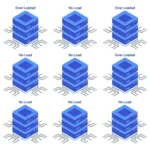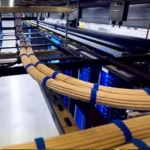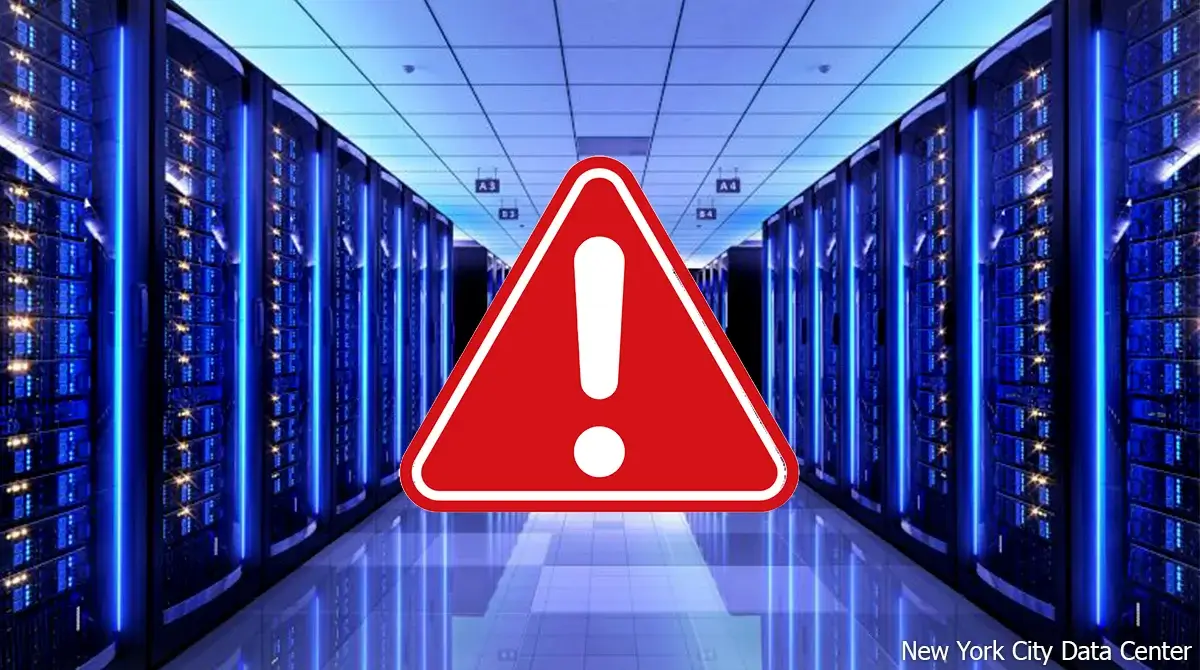“Causes, Impacts and Solutions”
Introduction
In the fast-paced world of modern finance and technology, server efficiency is crucial for sustaining operational excellence. One concept that often affects system performance in areas like New York City (NYC), where server farms and data centers are essential, is server slippage. Server slippage refers to the delay or inefficiency in the transmission of data caused by various network-related factors. NYC, a global hub for financial trading, telecommunications and cloud computing, relies heavily on servers for seamless operations. Therefore, even small inefficiencies can have widespread consequences.
Here, will explore server slippage in NYC, its causes, impact on different industries and potential solutions to mitigate these issues. We’ll also break down some of the more complex topics into tables for easier understanding.
Defining Server Slippage
Server slippage occurs when there’s a delay or loss in data transmission between servers and client machines, resulting in inefficiencies in operations. In high-speed environments like NYC, where milliseconds can mean millions in the financial sector, server slippage can lead to slower transaction speeds, delayed data reception and diminished performance of cloud services.
NYC’s strategic role in global finance and commerce makes server slippage a significant problem for a variety of industries, from fintech to e-commerce.
In the world of electronic trading, for example, financial firms rely on low-latency servers for executing high-frequency trades. Even a slight delay—often just a millisecond—can alter the price at which trades are executed, leading to financial losses. The same applies to other industries like media, advertising and healthcare, where slippage disrupts data flows and affects user experiences.
Key Causes of Server Slippage in NYC
Server slippage, particularly in a bustling, data-heavy environment like New York City (NYC), can arise from a variety of causes. These range from hardware and network limitations to software inefficiencies and geographical challenges. Below, we explore the primary causes of server slippage in NYC.
1. Network Congestion
 Network congestion occurs when the demand for data transmission exceeds the network’s capacity, leading to delays or dropped packets of information. In NYC, which hosts some of the world’s largest financial institutions, e-commerce platforms and cloud service providers, high traffic volumes are a constant issue.
Network congestion occurs when the demand for data transmission exceeds the network’s capacity, leading to delays or dropped packets of information. In NYC, which hosts some of the world’s largest financial institutions, e-commerce platforms and cloud service providers, high traffic volumes are a constant issue.
Impact
Delayed data transmission across critical platforms, including financial trading systems, media streaming services and e-commerce sites. This can result in revenue losses, poor customer experiences and inefficiencies in business operations.
2. Hardware Bottlenecks
 Server hardware that is outdated, overworked or not properly optimized for performance can cause bottlenecks. This includes insufficient processing power, inadequate memory or a lack of storage space, all of which slow down server operations. Given NYC’s dense population and extensive business infrastructure, the pressure on servers is significant.
Server hardware that is outdated, overworked or not properly optimized for performance can cause bottlenecks. This includes insufficient processing power, inadequate memory or a lack of storage space, all of which slow down server operations. Given NYC’s dense population and extensive business infrastructure, the pressure on servers is significant.
Impact
Reduced server performance, leading to increased latency and reduced throughput. Companies relying on older server hardware often face downtimes and slow response times, negatively affecting productivity.
3. Geographical Latency
 The geographical distance between data centers and end-users contributes to latency. Even in NYC, where major data centers are concentrated, the physical distance between data hubs and clients can create delays, particularly in industries that require near-instant data transmission, such as high-frequency trading or real-time data analytics.
The geographical distance between data centers and end-users contributes to latency. Even in NYC, where major data centers are concentrated, the physical distance between data hubs and clients can create delays, particularly in industries that require near-instant data transmission, such as high-frequency trading or real-time data analytics.
Impact
- Slower data access, affecting sectors like fintech, where the speed of transactions directly correlates with profitability, or healthcare, where quick access to medical records is crucial.
4. Poor Load Balancing
 Inadequate load balancing occurs when traffic isn’t evenly distributed among servers. In such scenarios, some servers can become overwhelmed with traffic, leading to slippage, while others remain underutilized.
Inadequate load balancing occurs when traffic isn’t evenly distributed among servers. In such scenarios, some servers can become overwhelmed with traffic, leading to slippage, while others remain underutilized.
Impact
System inefficiencies and increased latency in high-traffic periods, especially in industries like media and entertainment or e-commerce during peak shopping periods (e.g., Black Friday).
5. Software Mismatches & Misconfigurations
 Software that is not properly configured or is incompatible with certain hardware can cause slippage by delaying processes that should otherwise be smooth. This can be especially problematic in multi-tenant environments like cloud services, where multiple clients share the same server resources.
Software that is not properly configured or is incompatible with certain hardware can cause slippage by delaying processes that should otherwise be smooth. This can be especially problematic in multi-tenant environments like cloud services, where multiple clients share the same server resources.
Impact
Incompatibility issues, leading to lags, slow responses and poor user experiences, particularly for businesses using cloud-based software or SaaS platforms.
6. Outdated Infrastructure & Legacy Systems
 NYC, despite its modern infrastructure, houses many institutions still reliant on legacy systems. These older infrastructures are often ill-equipped to handle the growing demands of modern data traffic. Legacy systems can be slow, prone to breakdowns and more vulnerable to slippage when integrated with newer technologies.
NYC, despite its modern infrastructure, houses many institutions still reliant on legacy systems. These older infrastructures are often ill-equipped to handle the growing demands of modern data traffic. Legacy systems can be slow, prone to breakdowns and more vulnerable to slippage when integrated with newer technologies.
Impact
Increased downtime and maintenance costs, which hamper business continuity and delay services, especially in sectors like finance and healthcare where real-time data is essential.
7. Power Supply Issues
 Data centers and servers require continuous, stable power supplies. Any disruption to the power infrastructure, whether due to electrical faults, maintenance issues or external factors like weather conditions, can affect server performance and lead to slippage.
Data centers and servers require continuous, stable power supplies. Any disruption to the power infrastructure, whether due to electrical faults, maintenance issues or external factors like weather conditions, can affect server performance and lead to slippage.
Impact
Server downtime and data transmission delays, particularly in energy-intensive sectors like telecommunications and data storage.
8. Cybersecurity Threats
 With NYC being a hub for financial institutions and corporate headquarters, cybersecurity threats like DDoS attacks (Distributed Denial of Service) are common. These attacks flood a server with excessive traffic, causing overloads and consequently, slippage.
With NYC being a hub for financial institutions and corporate headquarters, cybersecurity threats like DDoS attacks (Distributed Denial of Service) are common. These attacks flood a server with excessive traffic, causing overloads and consequently, slippage.
Impact
Server overloads and unresponsiveness, which can disrupt operations and affect sensitive sectors like finance, law and healthcare, where secure and fast data transmission is critical.
9. Environmental Factors
 New York City’s location and climate can also contribute to server slippage. Natural disasters like floods, heatwaves or hurricanes can disrupt server operations by damaging physical infrastructure or increasing power outages. Extreme temperatures can cause servers to overheat, resulting in temporary shutdowns or slow performance.
New York City’s location and climate can also contribute to server slippage. Natural disasters like floods, heatwaves or hurricanes can disrupt server operations by damaging physical infrastructure or increasing power outages. Extreme temperatures can cause servers to overheat, resulting in temporary shutdowns or slow performance.
Impact
Temporary server failures or performance degradation, leading to operational delays in essential services like public transportation, emergency response systems and corporate networks.
Industries Most Affected by Server Slippage in NYC
1. Financial Sector
NYC is home to the world’s largest stock exchanges, including NASDAQ and the New York Stock Exchange (NYSE). In this space, high-frequency trading (HFT), where computers execute trades in fractions of a second, is heavily dependent on low-latency servers. Server slippage can lead to lost opportunities in this environment, where timing is critical, and even minor delays can cause significant financial losses.
For example, a trade that’s delayed by just 1 millisecond could result in missing out on a profitable price point, costing firms millions of dollars.
2. E-Commerce & Retail
The NYC retail and e-commerce sectors are also impacted by server slippage. Consumers expect fast and seamless online transactions and server delays can lead to poor user experiences, abandoned carts and lower sales conversions. Content delivery networks (CDNs), used by e-commerce platforms to deliver website content faster, can also experience slippage, further degrading the quality of service.
3. Healthcare
Healthcare in NYC increasingly depends on digital records, telemedicine and real-time diagnostic tools. Server slippage can impede Electronic Health Record (EHR) systems, causing delays in accessing patient information and affecting clinical decision-making processes. Hospitals and healthcare institutions that rely on real-time data exchange can face critical disruptions due to server slippage.
4. Media & Entertainment
The media and entertainment industry also suffers from server slippage, particularly in streaming and broadcasting. Slippage can lead to buffering or delayed streaming of live events, diminishing the quality of service. For large-scale media events broadcast from NYC, server delays can disrupt feeds, resulting in significant losses in audience engagement and advertiser revenue.
The Economic Impact of Server Slippage
The economic implications of server slippage are profound, particularly in a city like New York. Below is a quick comparison of the different financial losses in the affected sectors due to server slippage.
| Type of Impact | Potential Losses |
| Finance Sector: | |
| Missed trade opportunities due to high-latency execution | Millions of dollars per millisecond delay in high-frequency trading. |
| E-Commerce Sector: | |
| Abandoned carts and loss of customer trust due to poor site performance | Up to 20% drop in revenue during high traffic periods (e.g., holiday season). |
| Healthcare Sector: | |
| Delayed access to critical patient data | Life-threatening situations, increased operational costs. |
| Media/Entertainment Sector | |
| Poor streaming quality and delays in live broadcasts | Reduced audience engagement, loss of advertisers and revenue streams. |
Solutions to Mitigate NYC Servers Slippage
While server slippage is an inevitable challenge, especially in NYC, there are several strategies that companies and service providers can implement to mitigate the impact. Here are some key solutions:
1. Enhanced Load Balancing
One way to reduce server slippage is to ensure better load balancing across data centers. Load balancing evenly distributes incoming traffic among multiple servers, reducing bottlenecks and preventing any single server from becoming overwhelmed. For NYC businesses handling large amounts of traffic, load balancing is essential for maintaining high availability and performance.
2. Edge Computing
Edge computing is another solution to reduce server slippage by processing data closer to the source rather than relying on centralized servers. In NYC, this is especially valuable for applications like smart city initiatives and real-time financial transactions, where every millisecond counts. By decentralizing the data processing to the network’s edge, latency is significantly reduced.
3. Upgrading Hardware & Infrastructure
Regular upgrades to server hardware and infrastructure can mitigate many of the issues related to slippage. With the pace of technological advancement, data centers in NYC should continuously refresh their systems to ensure they are capable of handling increasing traffic volumes efficiently.
4. Network Optimization
Optimizing network routes through traffic shaping and compression techniques can also reduce slippage. Traffic shaping prioritizes essential data over less critical information, ensuring that the most important transmissions occur without delay. Network compression helps reduce the amount of data traveling between servers, thereby improving the speed and efficiency of data delivery.
5. Cloud Services with Regional Data Centers
NYC-based companies relying on cloud services should ensure that their cloud providers have regional data centers. The closer the data center to the end user, the lower the latency. Many cloud providers now offer regionalized services to mitigate slippage and provide faster response times for their clients.
Conclusion
Server slippage poses a significant challenge to NYC industries, particularly in sectors where real-time data processing is critical. The effects are felt across finance, healthcare, e-commerce and media, with potential losses that can be both financial and operational. By understanding the causes of slippage and implementing the appropriate mitigation strategies—such as enhanced load balancing, edge computing, hardware upgrades and network optimization—companies can better manage these delays. In a city where speed and efficiency are vital to success, tackling server slippage is crucial for maintaining NYC’s position as a global leader in business and technology.



